Two years ago, Nintendo released their super novel, ROM cartridge-based "Game Boy", a game system you can carry around the house with you, or take with you to the airport or the hotel. But the pea green monochrome graphics are a major drawback. You waited a couple of months to see what Atari's new "Lynx" would be-- and it sure looked cool. You almost bit, but the $450 price tag gave you pause. So you waited, and waited, and waited. Patiently. You held on to your cash, playing your Sega Genesis and DOS PC as the months rolled by.
Christmas hit. A few more months went into the history books. NEC came out with a portable version of their "TurboGrafx-16"-- but it was a big yawn, at almost $600.
A few more months passed-- and finally, finally two genuinely exciting things occurred. First, Sega belatedly entered the race with their new "Game Gear", priced at $350. Second, and in rapid-fire response, Atari released a brand new version of the Lynx, at only $230! You wanted a Lynx originally, but the big price tag scared you off-- now there's a $230 version, and with a stereo headphone jack to boot?
But you love your Genesis. The Sega name has real pull for you. The Game Gear is more expensive than the refreshed Lynx. Reports say it isn't as powerful either. But reports also warn that the Lynx isn't selling very well-- does the platform have a future? Isn't Sega better positioned, even if their hardware is technically not as good?
Determined to finally buy one of these two portable speed demons, you plan to hop into your Acura Integra and drive to the local B. Dalton. You want to pull every game magazine off the shelf, and do a deep dive into the specs of the two machines. You also know that down the hall in the same shopping center is a Software Etc., where they have both systems in stock for hands-on testing! You buckle your seat belt, and head out.
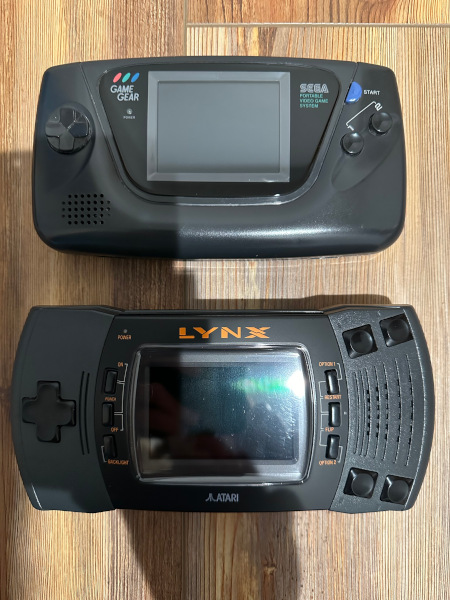
Of course, it's not July of 1991-- it's a shocking, staggering thirty-three years later: August of 2024. And I'd adjusted all of the prices for inflation, to provide a better context. But despite the passage of time, this writer has working examples of the two machines right at his fingertips! Let's analyze them to see, back in those exciting, heady days of the very early 90s, which of the systems would have been the better choice.
Let's talk aesthetics. The Game Gear is sleek and sexy. This writer has always been a sucker for the accents: the little red, green, and blue ovals; the green "portable video game system" text; and the blue-colored start button. The Lynx by contrast looks sophisticated like an actual computer, with its orange theme and six little rectangular buttons alongside either edge of the screen. They're both cool looking, but this writer prefers the Game Gear.
What about dimensions? Right from the start you, my faithful reader, can see above that the Lynx "II", as it was known within Atari, is quite a bit wider than Sega's Game Gear.

The Lynx is also chunkier, as you can see by looking at the tops of the systems. And that fact has practical manifestations: you can feel this thickness as you play the system. It isn't just a trick of the eye.
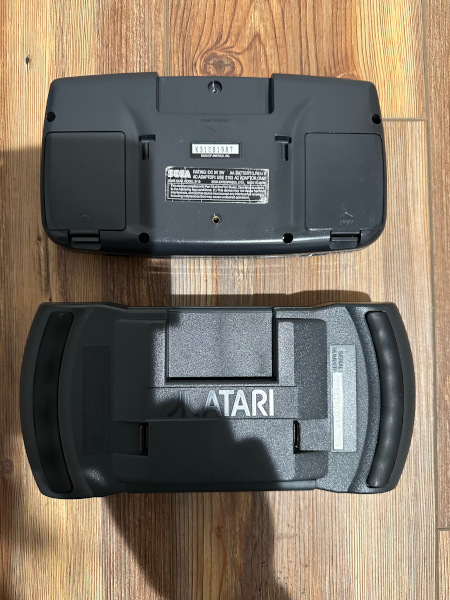
What are these systems like to hold then?
See those rubber grips on the back of the Lynx? The non-thumb four fingers on your right hand rest, at a comfortable angle, right within the grips on that side. The bottom-right corner sits comfortably in that palm, positioning your thumb right over the upper "B" and "A" buttons. Yes, Atari went the "Nintendo route" and has their buttons lettered backwards!
Meanwhile, the Lynx's d-pad is positioned further down-- because the Lynx is designed to be held left or right-handed! This has implications, as your left thumb's knuckle is angled more sharply, causing mild discomfort. The left side of the system doesn't feel quite as natural to hold as the right side. It's not a terrible experience mind you! But perhaps the left-handed feature-- beneficial to a tiny, tiny minority as most left-handed people probably didn't flip the system anyway-- wasn't worth the trade-off, which involved making the system less comfortable for everyone?
The Game Gear meanwhile is more symmetrical: the bottom corners bud right into your two palms evenly. There's not really a natural mold for the non-thumb fingers to hold onto, so they just sort of "rest" on the back of the system. Really, both systems are comfortable to hold even for extended sessions-- but this writer and both of his kids all prefer the Game Gear's ergonomics. Incidentally, either system is miles ahead of the portrait-mode Game Boy-- but that's outside the scope of this article to discuss.
So how much do these systems weigh? Let's collect some numbers.
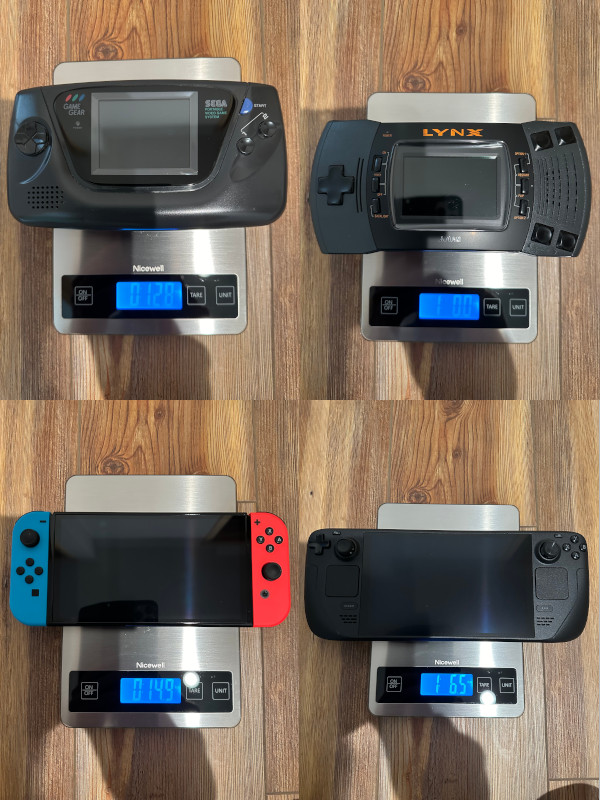
Without batteries, the Game Gear and Lynx weigh 12.8 oz, and exactly 16 oz, respectively. So the Lynx isn't just bigger, it's also heavier-- but only by a small amount, which isn't really noticeable during gameplay. To give some context versus modern-day systems, the Nintendo Switch OLED weighs 14.9 oz, while Valve's OLED Steam Deck comes in at a whopping 22.5 oz! So the Lynx feels about the same weight as a Switch.
But how much do AA batteries weigh? Turns out-- exactly 1 oz each! So fully-loaded with six AA batteries, the Game Gear and the Lynx come out to 18.8 oz and 22 oz, respectively. In other words, both of them are still lighter than an OLED Steam Deck, even when running on battery power.
So what are these systems actually like to play? Let's talk about Sega's Game Gear first.
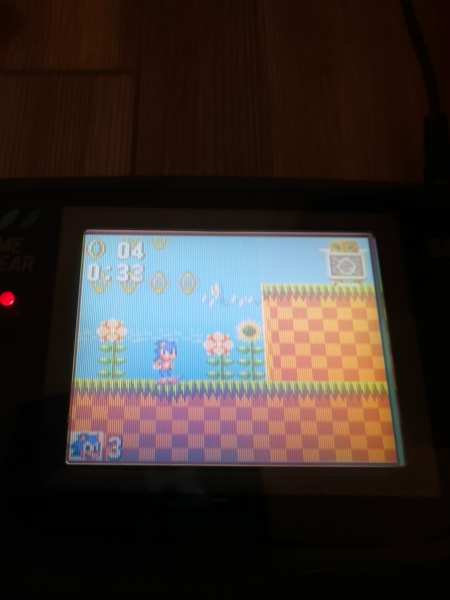
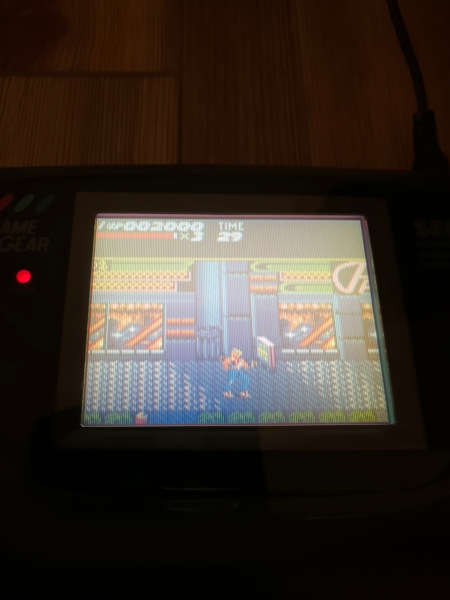
This writer has never held his love of the Game Gear a secret. Everything written there is as true in 2024 as it was in 2015.
The Game Gear is essentially a portal Master System. It doesn't do any fancy graphical effects: it can't scale sprites; it can't rotate sprites; it can't do any kind of "Mode 7"-like playing fields; and it has a meager PSG for audio. But what it can do is deliver a bright, cheery, 32-color simultaneous picture, with smooth sixty frames-per-second gameplay and lots of parallax scrolling, thanks to Sega's trademark VDP tiled-background engineering skills, with really pleasant, wind-chimey music and sound effects.
The Game Gear's d-pad is top notch, which is not surprising coming from the company which went on to produce the six-button Genesis and Saturn pads. The "1" and "2" buttons are mildly imprecise but firm enough to register on each press.
Want to see what the Game Gear can do on all fronts? Check out Shinobi II. How about some Sonic? Or Streets of Rage 2?
If you want the full specs they are well documented. But to bring those specs to life: playing titles on the Game Gear is fun! The games are pretty, run well, and sound pleasant. In a way, the Game Gear is the Genesis to the Lynx's Super NES-- the former is fast and no frills, while the latter focuses more on special effects than raw framerate.
And that last sentence segues into the Lynx!
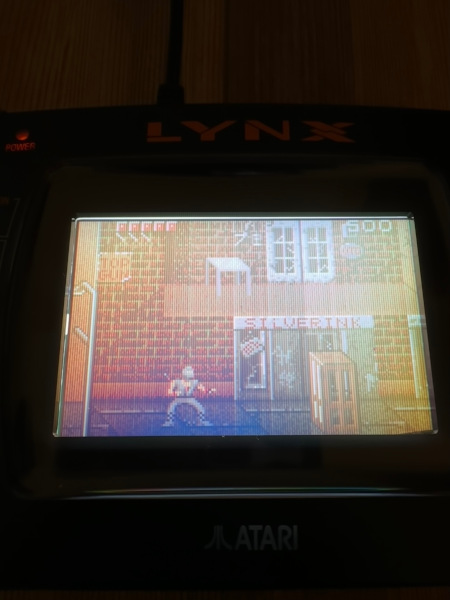
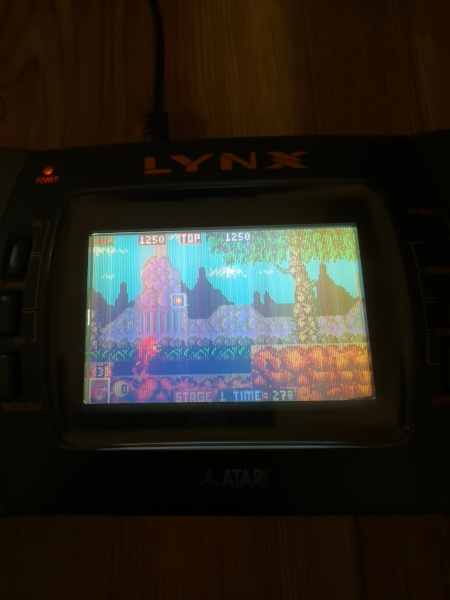
Thirty-three years have not been kind to this writer's Lynx screen. Just like the Game Gear, the Lynx has a tiny fluorescent CRT-- but this particular example is badly damaged, with inconsistent contrast across the backlight, and tons of vertical color bleeding. When brand new, this display looked similar to the Game Gear pictures above-- just a slightly different aspect ratio, and a little bit lower vertical resolution (the Game Gear is 160x144 versus the Lynx's 160x102).
Lynx games often run at a lower framerate than Game Gear software-- because they prioritize special effects. And boy can the Lynx do special effects! The system has a whopping 64k of memory. Meanwhile, the RJ Mical and Dave Needle-designed chipset has more features than the Super NES-- in a 1989 handheld! The Lynx can do sprites, fully scaled, rotated, and angled. If that's not enough, the four-channel audio chip can not only do various waveforms, but it can play digital audio samples with better general clarity than a Sega Genesis!
Just look at Warbirds! Or Battlewheels! Or Shadow of the Beast! The audio is capable of some really rich, deep tones, and much of the library has moody music like this. The system's full specs are here if you want to read them.
As for buttons, the Lynx also has a top-notch d-pad. It's larger than the Game Gear's, and rather than rocking it almost feels more like the PlayStation's, wih separate points-of-contact along the various directions. The "B" and "A" buttons are crisp! The mode buttons alongside the screen are difficult to differentiate in the heat of gameplay-- but usually they are used for functions such as maps and things, where the player has time to glance down.
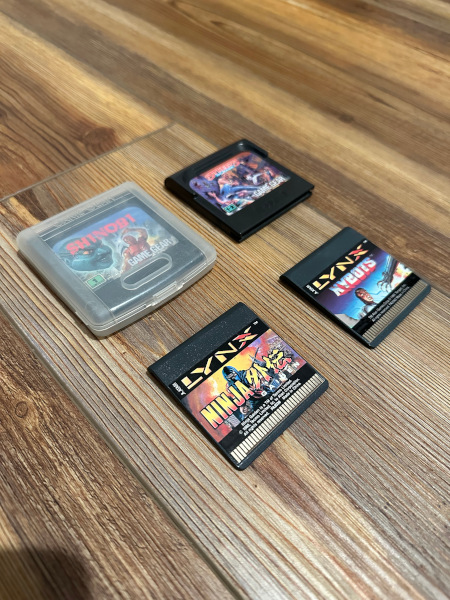
Game Gear titles ship on cute little cartridges, which come in little clear clamshell protective cases. Lynx games ship on cards, which are vaguely like the PC Engine's "Hu-Cards", but with a curved "lip" at the top to make them easier to pull out of the system. Both sets of titles come in flimsy cardboard boxes.
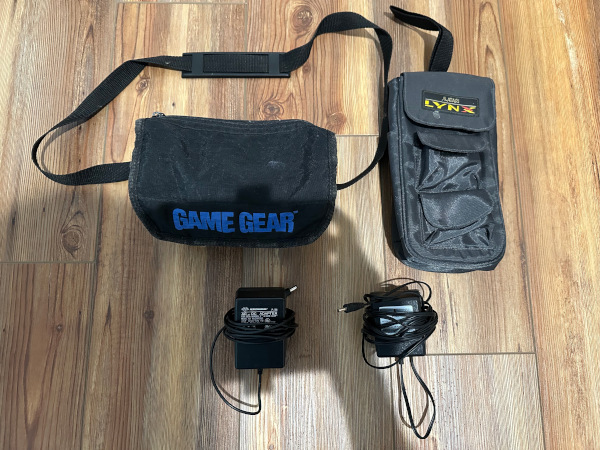
And both systems had lots of accessories, like official carrying cases, A/C adapters, magnifying lenses, and all the rest. The Game Gear even had an available TV tuner, which plugged into the accessory port on the top, and had a single rabbit ear! And it had an adapter to let you play Master System games on it! As for multiplayer, both systems had link cable capabilities, but with the Lynx the systems could be networked together, and some titles supported something like six people playing at once!
Back to our story: it's July of 1991. You've been to the book store. You've been to Software Etc. You've played them both. You loved them both. But you only have the cash for one. Which one will it be? The $230 Lynx, or the newer but more expensive $350 Game Gear?
You walk out the store smiling, with a brand new boxed system in the bag-- a Sega Game Gear. Along with "Columns", the pack-in title, you also bought a copy of the superb 8-bit "Castle of Illusion Starring Mickey Mouse", plus an A/C adapter.
The Lynx is incredible: the graphics are mind blowing; the sound is great; it's comfortable to hold. The games have a really unique charm and character. But the system isn't selling. The game library is tiny compared to the Game Boy, even after two years on the market. The Game Gear may be brand new, but you know that it has golden age Sega backing it, with the likes of Rieko Kodama, Yuji Naka, Yuzo Koshiro, and Sega's immense stable of world class talent, which will undoubtedly be churning out software in spadefuls-- miniaturized renditions of games series you already adore on the Genesis.
So that's 1991. What about 2024? In modern times this writer mildly prefers the Lynx! The games are cheap, even complete-in-box, making it fun to collect for. And where-- in part due to the success of it and other platforms like it-- the Game Gear's library experience has been sort of superceded by later titles and systems, you just can't play games like Lynx software anywhere else, making it feel more distinctive. Take a look at games like "Xybots" or "Electrocop" to see evidence of this.
But no matter which one you chose-- or choose!-- you will be pleased: these are both beautiful, premium systems, with bright and lovely fluorescent CRT displays, with crystal clear audio with or without headphones, and with libraries teeming with interesting software. Modern considerations include replacing the original displays with scanline-emulating "BennVenn" LCDs, and of course fully-replacing all of the systems' capacitors. It's also well-worth playing the games on A/C power primarily, then using rechargeable AA batteries when on the go.